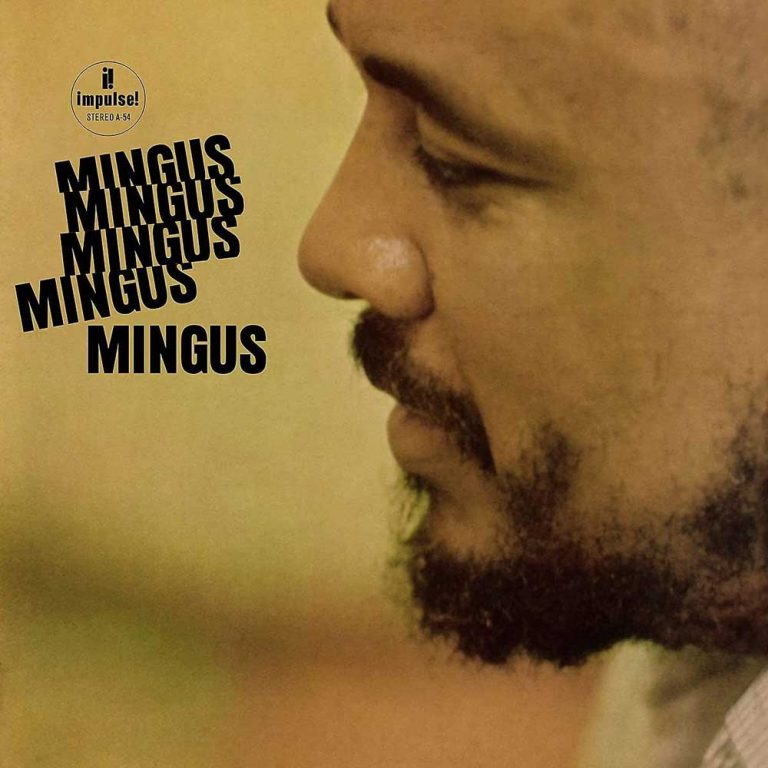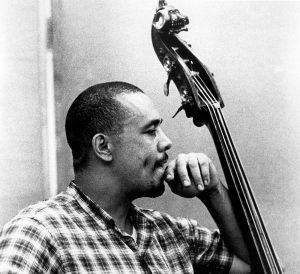Mingus’ music of 1963 was as provocative, enigmatic and dangerous as the man himself, but he was also as near to mainstream acceptance as he would ever be. Despite an infamous October 1962 concert at New York City’s Town Hall, Impulse! house producer Bob Thiele was hell-bent on getting the bassist and composer onto the label.
The result was three fascinating albums, all recorded in 1963. “Mingus Mingus Mingus Mingus Mingus”, released in January 1964 and blessed with some incisive Nat Hentoff liner notes, is often cited as an inferior sequel to “The Black Saint And The Sinner Lady” (which came with liner notes by Mingus’ psychiatrist), but it deserves a much better rep than that.
Most of the album’s material was recorded on the same day as “Black Saint” – 20 January 1963 – but a short session was added on 20 September. “Mingus Mingus Mingus Mingus Mingus” relied a lot less on overdubs and edits than its predecessor and was also his most Ellingtonian album yet, emphasised by a delicious take on “Mood Indigo” and distinctly Duke-ish “1 X Love”.
Poet and jazz critic Philip Larkin took a less favourable approach to the comparison, however, decrying Mingus’s update of previously recorded compositions: “Duke the entertainer would never show the contempt for the audience Mingus shows”. Undoubtedly there’s a fair amount of reworked material, but it’s beautifully observed: “Theme For Lester Young” is a rehash of “Goodbye Pork Pie Hat”. “Hora Decubitus” – with majestic solos by Booker Ervin, Eric Dolphy and Richard Williams – nods to “E’s Flat, Ah’s Flat Too”, while the effervescent “II B.S.” is a rewrite of “Haitian Fight Song”.
Meanwhile “Better Get Hit In Yo’ Soul” was recorded for the third time (this time with a “Hit” instead of an “It” in the title), surely the fastest 6/8 groove in music history with a wonderful baritone sax solo from Jerome Richardson and killer double-time gospel tag. “Celia”, written for Mingus’s second wife, showcased an incredible Charlie Mariano tenor sax solo.
On 30 July 1963, Mingus recorded his final album for Impulse! at RCA Studios, his one and solo piano collection aptly titled “Mingus Plays Piano”. The rest of the year would be full of personal and political upheavals. He left his third wife and their two kids, and his publisher rejected the first edition of his memoir, “Beneath The Underdog”. On 28 August, Martin Luther King Jr. led the March on Washington. On 22 November, JFK was shot dead in Dallas.

In January 1964 Mingus started a two-month residency at the Five Spot Café in Greenwich Village, soon after Thelonious Monk’s remarkable seven-month stint. A European tour followed. Tragically Eric Dolphy passed away suddenly from a diabetes shock in June at the age of just 36. It precipitated a very difficult period in Mingus’s musical life – he wouldn’t record again until 1970.
When Impulse! reportedly didn’t offer to raise Mingus’s advance for album number four, the bassist bailed. Thiele reported that he came into work one morning to find a knife in the back of his office chair pinioning an expletive-laden note. But in time all was forgiven, and Mingus praised Thiele: “Thanks, man, for coming to my Town Hall session, hearing the music, liking it, and hiring my band to record for your company when the critics scared the pants off the people for whom I wrote the music.”

Charles Mingus Mingus Mingus Mingus Mingus Mingus
Available to purchase from our US store.Matt Phillips is a London-based writer and musician whose work has appeared in Jazzwise, Classic Pop, Record Collector and The Oldie. He’s the author of “John McLaughlin: From Miles & Mahavishnu To The 4th Dimension”.
Header image: Charles Mingus, Portrait with Double Bass, circa 1950’s. Photo: JT Vintage/Glasshouse Images/Alamy.


